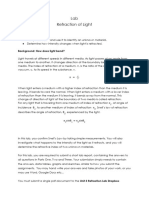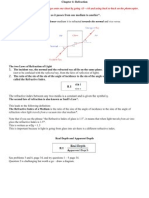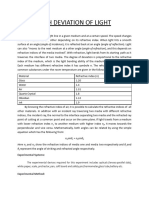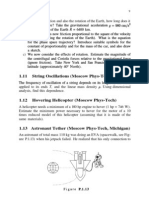0% found this document useful (2 votes)
384 views3 pagesPart 3: Refractive Index of A Mystery Material
The document describes an experiment to determine the refractive index of a mystery material (Mystery A) using Snell's law. Six measurements of the incident and refracted angles were recorded when light passed from Mystery A into glass. A graph of sinθ1 vs sinθ2 yielded a slope equal to the ratio of the sines. Using the slope, Snell's law, and the known refractive index of glass, the refractive index of Mystery A was calculated. By comparing to known refractive indices, the mystery material was identified as having a refractive index close to 1.33, with a percent error of [VALUE]%.
Uploaded by
True PattersonCopyright
© © All Rights Reserved
We take content rights seriously. If you suspect this is your content, claim it here.
Available Formats
Download as PDF, TXT or read online on Scribd
0% found this document useful (2 votes)
384 views3 pagesPart 3: Refractive Index of A Mystery Material
The document describes an experiment to determine the refractive index of a mystery material (Mystery A) using Snell's law. Six measurements of the incident and refracted angles were recorded when light passed from Mystery A into glass. A graph of sinθ1 vs sinθ2 yielded a slope equal to the ratio of the sines. Using the slope, Snell's law, and the known refractive index of glass, the refractive index of Mystery A was calculated. By comparing to known refractive indices, the mystery material was identified as having a refractive index close to 1.33, with a percent error of [VALUE]%.
Uploaded by
True PattersonCopyright
© © All Rights Reserved
We take content rights seriously. If you suspect this is your content, claim it here.
Available Formats
Download as PDF, TXT or read online on Scribd
/ 3






















































































